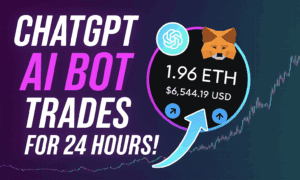Introduction:
In recent years, the intersection of technology and creativity has given rise to a groundbreaking phenomenon – Non-Fungible Tokens (NFTs) and the blockchain revolution. These digital assets are changing the landscape of ownership and creativity in ways previously unimaginable. In this article, we’ll delve into the world of NFTs, exploring how they work, their impact on digital ownership, and the transformative effect they’ve had on the creative industries.
Understanding NFTs:
NFTs, or Non-Fungible Tokens, are unique digital assets that represent ownership of a specific item or piece of content. Unlike cryptocurrencies such as Bitcoin or Ethereum, NFTs are indivisible and cannot be exchanged on a one-to-one basis. Each NFT is distinct, carrying with it a proof of authenticity and ownership, thanks to blockchain technology.
Blockchain and Digital Ownership:
Blockchain, the underlying technology of NFTs, is a decentralized and secure ledger that records transactions across a network of computers. This distributed ledger ensures transparency and immutability, eliminating the risk of fraudulent activities. When applied to digital assets like images, videos, or music, blockchain provides an unalterable record of ownership, forever linking the creator to their work.
The Impact on Digital Ownership:
One of the key contributions of NFTs is the transformation of digital ownership. Previously, owning a digital file did not necessarily grant ownership of the content itself. With NFTs, creators can tokenize their work, establishing a direct link between the artist and the buyer. This has profound implications for artists, musicians, and other content creators who can now monetize their digital creations without fear of unauthorized duplication.
Empowering Content Creators:
NFTs have become a powerful tool for content creators, allowing them to retain control over their work and receive fair compensation for their efforts. Through smart contracts, creators can set conditions for the resale of their NFTs, ensuring they receive a percentage of the profits each time the asset changes hands. This empowers artists and creators to build sustainable careers in the digital age.
The Rise of Digital Marketplaces:
The surge in NFT popularity has given rise to digital marketplaces dedicated to buying, selling, and trading these unique tokens. Platforms like OpenSea, Rarible, and Mintable have become hubs for digital art, music, and virtual real estate. These marketplaces leverage blockchain technology to facilitate secure transactions and provide a space for artists to showcase and sell their NFTs to a global audience.
Challenges and Concerns:
While NFTs offer exciting opportunities, they also come with challenges and concerns. Environmental sustainability is a major issue, as the energy consumption of blockchain networks supporting NFT transactions has raised eyebrows. Additionally, the potential for copyright infringement and the need for increased regulatory clarity are areas that the NFT space is actively addressing to ensure its long-term viability.
Transforming the Gaming Industry:
Beyond the realm of traditional art and media, NFTs are making significant inroads into the gaming industry. Blockchain-based games use NFTs to represent in-game assets, allowing players to truly own and trade their virtual items. This new paradigm is revolutionizing the gaming experience, fostering player-driven economies and opening up new revenue streams for game developers.
Cultural Impact and Recognition:
The cultural impact of NFTs cannot be overstated. Digital artists who once struggled for recognition in traditional art circles are finding a global audience in the NFT space. The ability to prove authenticity and ownership through blockchain has given digital art the legitimacy it deserves, challenging conventional notions of value and recognition in the art world.
Looking Ahead:
As NFTs continue to gain momentum, the future holds even more possibilities. The technology is likely to evolve, addressing current challenges and expanding its applications. Integrations with virtual reality and augmented reality could further enhance the immersive experience of owning and interacting with NFTs. The ongoing collaboration between artists, technologists, and enthusiasts will shape the trajectory of this transformative revolution.
Conclusion:
The rise of NFTs and the blockchain revolution is redefining digital ownership and creativity. Through the secure and transparent nature of blockchain technology, NFTs provide a platform for artists and creators to showcase their work, monetize their talent, and establish a direct connection with their audience. While challenges persist, the overall impact of NFTs on various industries is undeniable, marking a pivotal moment in the way we perceive and engage with digital content. As we navigate this evolving landscape, the potential for NFTs to continue shaping the future of digital ownership and creativity remains boundless.



































